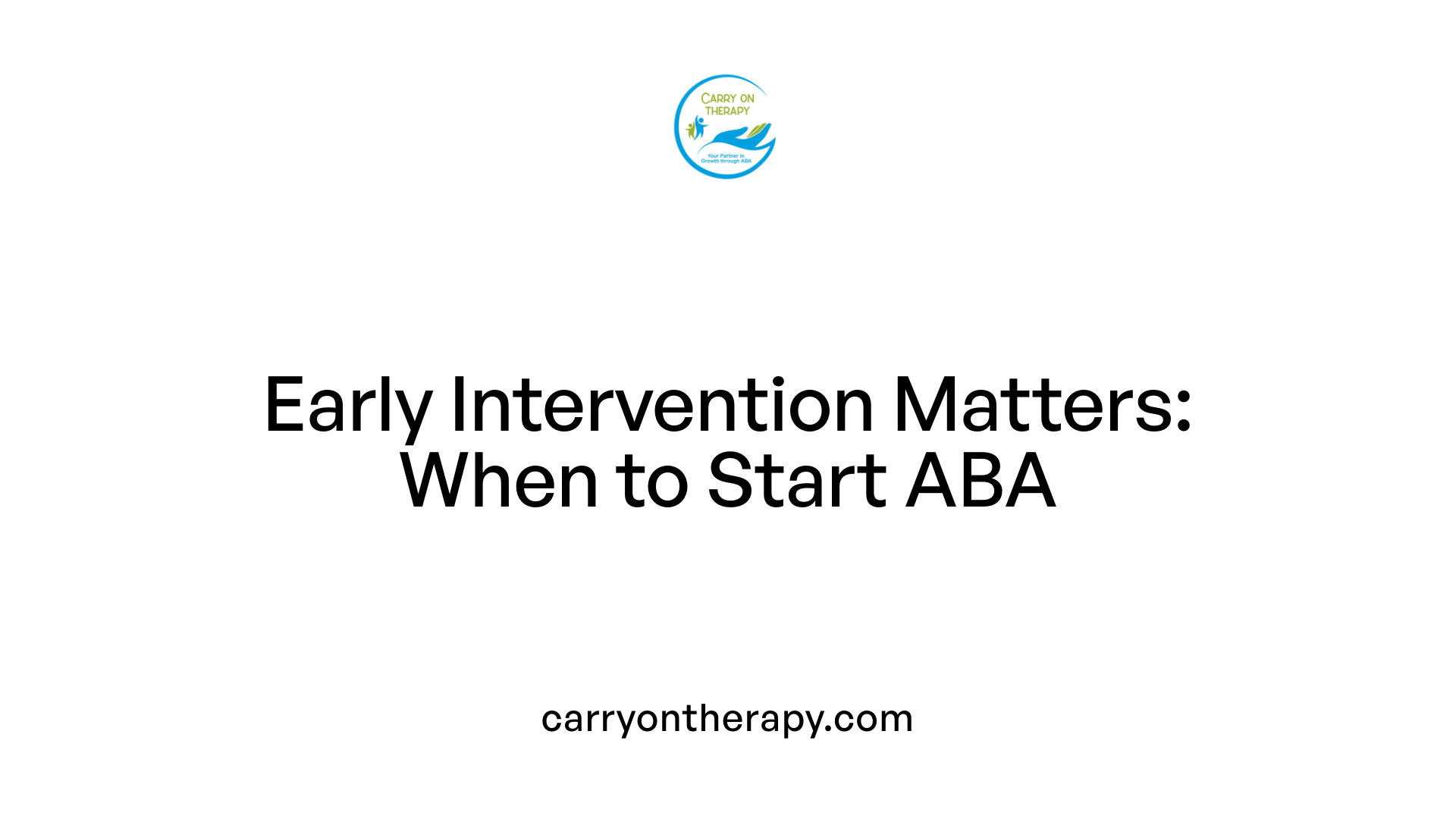Autism Obsessions
Exploring the Science and Impact of ABA Therapy on Autism Spectrum Disorder

Understanding Autism and the Role of ABA Therapy
Autism Spectrum Disorder (ASD) affects many individuals worldwide, presenting unique challenges in communication, behavior, and social skills. Among the most researched and applied approaches to support individuals with autism is Applied Behavior Analysis (ABA) therapy. This article explores the fundamentals of ABA, its techniques, providers, and the compelling evidence supporting its role in improving lives affected by autism.
What is Applied Behavior Analysis (ABA) Therapy?

What is Applied Behavior Analysis (ABA) therapy and how does it help individuals with autism?
Applied Behavior Analysis (ABA) therapy is a scientifically validated approach that applies principles from the science of learning and behavior to support individuals with autism spectrum disorder (ASD). This therapy focuses on increasing positive behaviors such as communication, social skills, attention, and self-care, while reducing behaviors that may be harmful or interfere with learning.
ABA's core principle is positive reinforcement, which means rewarding desired behaviors to encourage their recurrence. Therapists carefully analyze the antecedents and consequences of behaviors to develop effective strategies for behavior change. This thorough behavior analysis shapes customized learning plans that break down skills into small, manageable steps.
ABA programs are highly individualized. Board Certified Behavior Analysts (BCBAs) design and oversee each program based on the unique strengths, challenges, interests, and family circumstances of each person receiving therapy. Registered Behavior Technicians (RBTs) or therapists deliver one-on-one intervention sessions under the supervision of BCBAs, ensuring fidelity and effectiveness of treatment.
Research evidence strongly supports ABA's effectiveness. Intensive, long-term ABA therapy—typically 25 to 40 hours per week over one to three years—has been shown to produce meaningful gains in intellectual functioning, language, daily living skills, and social abilities. Children receiving ABA are more likely to develop independence and improve quality of life.
In summary, ABA therapy is a data-driven, personalized intervention guided by trained professionals. It empowers individuals with autism by promoting adaptive behaviors and reducing challenges in a supportive, structured way.
Who Provides ABA Therapy?

Who typically provides ABA therapy for individuals with autism?
ABA therapy for individuals with autism is typically delivered by Board Certified Behavior Analysts (BCBAs). These professionals hold advanced degrees and have specialized certifications, equipping them to design individualized treatment plans based on decades of behavior analytic research.
What roles do Registered Behavior Technicians (RBTs) and assistants play?
While BCBAs develop and supervise the therapy, Registered Behavior Technicians (RBTs) and other therapy assistants often implement the day-to-day interventions. They work directly with clients, conducting sessions and collecting data under BCBA supervision.
In what settings is ABA therapy provided?
ABA is versatile and offered across various environments, including specialized clinics, schools, homes, and community settings. This flexibility helps tailor therapy to real-life contexts, promoting skill generalization.
Why is supervision and ongoing training important?
Continuous supervision ensures treatment fidelity and safety. BCBAs monitor progress, adjust goals, and guide assistants, while ongoing training keeps the therapy team updated with best practices in behavior analysis.
How do families and educators collaborate in ABA?
Effective ABA involves teamwork with families and educators. Sharing information and strategies between therapists, caregivers, and teachers helps maintain consistency and supports the individual’s development across different settings.
Common ABA Techniques Used to Support Autism

What are the common techniques used in ABA therapy?
Applied Behavior Analysis (ABA) therapy employs a range of effective techniques to support individuals with autism spectrum disorder. One foundational method is positive reinforcement, where desired behaviors are encouraged by following them with rewards, making those behaviors more likely to reoccur.
Another well-known approach is Discrete Trial Training (DTT), a highly structured system that breaks skills into small, teachable steps through repeated practice. This method often forms the backbone of many ABA programs.
Video modeling and prompting are important visual supports used to demonstrate skills and guide learners toward independence by gradually reducing assistance. Alongside this, behavior chaining breaks down complex behaviors into sequenced steps, making acquisition manageable.
To reduce problematic behaviors, ABA uses extinction, which involves withholding reinforcement that maintains unwanted actions. Additionally, Functional Communication Training (FCT) replaces challenging behaviors with more appropriate ways to communicate needs.
Naturalistic approaches like Pivotal Response Training (PRT) focus on enhancing motivation and communication within everyday interactions and real-life settings, making learning more generalized and meaningful.
ABA therapy is highly individualized, often combining multiple techniques such as token economies, redirection, and script fading tailored to each person's unique abilities, goals, and environments. This flexibility helps ensure comprehensive and effective treatment tailored to individual needs.
Starting ABA Therapy: Ages and Early Intervention Models

At what age can individuals start receiving ABA therapy?
ABA therapy can begin at virtually any age, from infancy through adulthood, tailored to the individual's unique needs. Early intervention, usually between birth and six years old, is widely regarded as the most effective period to address core challenges of autism spectrum disorder. Programs targeting infants as young as 6 to 15 months — such as the Early Start Denver Model (ESDM) — demonstrate promising improvements in communication and social interaction.
What are some models of early intervention in ABA?
Two prominent early intervention ABA models include Early Intensive Behavioral Intervention (EIBI) and the Early Start Denver Model (ESDM). EIBI is designed for children under five and involves intensive treatment, typically 20 to 40 hours weekly, focusing on comprehensive skill-building, such as language, play, and daily living abilities. The ESDM integrates ABA with developmental and relationship-based approaches in naturalistic settings, making it effective even with very young children.
How does early intervention impact language and social development?
Research strongly supports the benefits of early ABA interventions. Meta-analyses reveal medium to large effects on language acquisition and social skills when therapy starts early and is delivered intensively over long periods. For example, nearly half of children receiving early comprehensive ABA treatment have been shown to attain normal intellectual and educational functioning levels, pointing to substantial gains beyond core behavioral improvements.
Is ABA therapy suitable for older children and adults?
While the greatest gains are often seen in early childhood, ABA therapy is adaptable for adolescents and adults. Interventions for older individuals can be customized to address specific challenges, from communication difficulties to managing behaviors and improving independence. This flexibility means ABA can enhance quality of life across the lifespan, not solely in early development.
ABA therapy’s individualized nature ensures that treatment goals evolve with the person's age and needs, making it a valuable support throughout different stages of life.
Scientific Evidence Supporting ABA Therapy

What evidence supports the effectiveness of ABA therapy for autism?
Extensive research over the past 40 years supports the effectiveness of Applied Behavior Analysis (ABA) for individuals with autism spectrum disorder (ASD). Controlled studies, including randomized controlled trials (RCTs) and single-case experimental designs, demonstrate that ABA can significantly improve a range of functions such as communication, social skills, adaptive behavior, and reduce challenging behaviors like aggression and self-injury.
Research studies and meta-analyses
Large-scale studies and meta-analyses have found that early, intensive ABA programs produce medium to large effects in language development and social skills in children with ASD. For example, the UCLA Young Autism Project showed that 47% of children undergoing ABA therapy achieved normal intellectual and educational functioning compared to only 2% of a control group. Moreover, 63% to 88% of reviewed studies report improvements in cognition, language, social interactions, and daily living skills.
Impact on cognition, communication, social skills, adaptive behavior
ABA therapy has been shown to increase helpful behaviors — such as language acquisition, communication skills, social engagement, and self-care — while decreasing harmful or problematic behaviors. Techniques like Functional Communication Training (FCT) replace disruptive behaviors with appropriate communication, and methods like Pivotal Response Training (PRT) boost motivation in natural settings.
Comparisons with control groups
Research incorporating control groups reveals significantly better outcomes for ABA-treated children than untreated or differently treated controls. However, only about 4% of studies have included such rigorous comparisons with untreated groups, highlighting the need for more controlled research.
Limitations in existing research
Despite overwhelming positive outcomes, many studies are small-scale, lack comparison groups, or rely solely on mastery criteria. This limits the generalizability and strength of some findings. Effects on autism severity specifically are less clear and require further exploration.
Recommendations for further rigorous studies
Current research emphasizes a pressing need for large-scale prospective studies, including randomized controlled trials, to more definitively compare ABA with other interventions and assess long-term impacts on quality of life. Enhanced study designs will help fill existing gaps and strengthen the evidence base supporting ABA therapy for autism.
Measuring Progress in ABA Therapy
How is progress measured during ABA therapy sessions?
ABA therapy relies on systematic data collection techniques to measure progress accurately during sessions. Practitioners use various recording methods tailored to the behavior of interest, including frequency (how often a behavior occurs), duration (how long a behavior lasts), interval recording (noting whether behavior occurs within set time frames), and latency recording (time between a stimulus and response).
Data collection techniques during sessions
These data collection methods provide objective, quantitative information that helps therapists understand behavior patterns and treatment effectiveness. For instance, frequency recording is common for discrete behaviors, while duration is important when measuring sustained actions.
Analyzing progress and adapting treatment
Collected data are regularly analyzed to identify improvements or the need for adjustments. This analysis guides the treatment team in modifying interventions—such as changing reinforcement strategies or prompting methods—to better support skill acquisition and reduce problem behaviors.
Tracking reductions in problem behaviors and skill acquisition
Progress measurement focuses on both decreases in problematic behaviors and increases in adaptive skills like communication, social interaction, and self-care. Therapists break down complex skills into small, measurable steps, tracking each step's mastery over time.
Role of multidisciplinary collaboration in progress assessment
Measuring progress benefits greatly from collaboration among behavior analysts, therapists, parents, teachers, and other professionals. This team effort ensures data reflect real-world performance across settings and promotes consistency in goal-setting and intervention adjustments.
| Aspect | Description | Purpose |
|---|---|---|
| Frequency Recording | Counting occurrences of a behavior | Tracks how often a behavior happens |
| Duration Recording | Measuring how long a behavior lasts | Understands persistence of behaviors |
| Interval Recording | Observing behavior within time intervals | Captures behavior occurrence rates over time |
| Latency Recording | Measuring delay between cue and response | Assesses response speed, motivation, or comprehension |
| Collaborative Data Review | Sharing and discussing data among team members | Ensures accurate, comprehensive progress assessment |
Comprehensive ABA Treatment Models and Their Applications
What Are the Main ABA Treatment Models Used for Autism?
Applied Behavior Analysis (ABA) includes several well-established treatment models tailored to support children with autism spectrum disorder (ASD). These include Early Intensive Behavioral Intervention (EIBI), the Early Start Denver Model (ESDM), and Learning Experiences: An Alternative Program for Preschoolers and Their Parents (LEAP).
EIBI is one of the most prominent ABA treatments for children typically under 5 years old. It involves intensive therapy often lasting 20 to 40 hours per week over several years. This comprehensive approach targets all areas of functioning—from language and social skills to independent living—with customized goals for each child.
The Early Start Denver Model blends ABA principles with developmental and relationship-focused strategies. ESDM emphasizes play-based learning that occurs naturally during interactions, making it particularly engaging for young children.
LEAP offers a specialized preschool program integrating ABA within a classroom setting, encouraging peer interactions and parent involvement to enhance social skills and learning.
How Do Naturalistic ABA Techniques and Functional Communication Training (FCT) Fit In?
Naturalistic teaching methods such as Pivotal Response Training focus on motivation and communication by promoting learning in real-life settings rather than structured trial formats. Functional Communication Training aims to reduce challenging behaviors by teaching children communicative alternatives, replacing problematic actions with appropriate expressions.
In What Settings and Over What Duration Are Intensive ABA Programs Delivered?
Comprehensive ABA programs like EIBI are usually delivered one-on-one by trained therapists under BCBA supervision. These interventions take place across various settings, including healthcare facilities, specialized clinics, homes, and educational environments. Intensive ABA programs typically continue for multiple years, with therapy hours ranging between 20 to 40 per week, ensuring consistent support to optimize outcomes.
These models collectively demonstrate how ABA adapts scientifically-validated strategies to meet diverse needs in autism treatment, emphasizing early, intensive, and personalized intervention.
Professional Qualifications and Training in ABA
Educational Requirements for ABA Providers
Providers in Applied Behavior Analysis (ABA) typically hold advanced degrees, often a master's or higher in psychology, education, or related fields. This educational background equips them with the essential knowledge to design and implement effective, individualized treatment plans for individuals with autism spectrum disorder (ASD).
Importance of Certifications such as BCBA
Certification plays a crucial role in maintaining high standards in ABA therapy. The Board Certified Behavior Analyst (BCBA) credential is the most recognized certification, demonstrating that a practitioner has met rigorous requirements in education, experience, and ethics. BCBAs oversee treatment programs and ensure that interventions align with established behavioral science principles.
Roles of RBTs and Paraprofessionals
Registered Behavior Technicians (RBTs) and paraprofessionals typically deliver one-on-one interventions under BCBA supervision. While RBTs are trained in implementing ABA techniques directly with clients, they require ongoing guidance to manage sessions effectively and respond to client needs.
Supervision and Ongoing Professional Development
Continuous supervision by certified professionals ensures fidelity to ABA protocols and facilitates adjustments to therapy based on client progress. Additionally, ongoing professional development, including workshops and updated training in emerging techniques, supports providers in delivering evidence-based care.
Ensuring Quality and Safety in Therapy Delivery
Quality assurance in ABA therapy involves staff qualifications review, clear goal-setting methods, and regular progress evaluations. Parents and caregivers are encouraged to inquire about provider credentials, safety measures, and staff training to ensure that therapy services meet professional and ethical standards.
| Aspect | Details | Importance |
|---|---|---|
| Education | Master's or higher in psychology, education, or related fields | Provides foundational knowledge for effective treatment |
| Certification | BCBA credential | Guarantees adherence to ethical and professional standards |
| Direct Care Providers | RBTs and paraprofessionals supervised by BCBAs | Implements therapy with supervision to maintain quality |
| Supervision | Ongoing oversight by certified professionals | Ensures fidelity and appropriate adjustments in therapy |
| Quality and Safety Practices | Credential verification, safety protocols, progress monitoring | Critical for maintaining trust and effectiveness of therapy |
Settings and Accessibility of ABA Services
Where is ABA Therapy Provided?
ABA therapy is offered across diverse settings to support individuals with autism spectrum disorder (ASD) in ways that best suit their daily lives. Common environments include healthcare facilities, educational systems, private clinics, and social service agencies. This variety allows interventions to be seamlessly integrated into settings such as schools or homes, enhancing generalization of skills.
How Does Insurance and Medicaid Support ABA?
Many individuals access ABA therapy through private insurance or Medicaid coverage, which often cover services prescribed as medically necessary. However, availability and scope of coverage differ widely depending on the insurer and location, posing challenges for some families seeking care.
How is ABA Therapy Customized for Different Environments?
ABA programs are highly individualized, crafted by certified behavior analysts (BCBAs) to align therapy goals with each person's unique abilities, needs, and everyday contexts. This customization ensures techniques and objectives fit naturally into environments like schools or homes, maximizing effectiveness.
What Role Do Parents Play in ABA Quality and Accessibility?
Parents and caregivers act as vital advocates for their child's ABA services. They are encouraged to inquire about staff qualifications, training, supervision, safety, goal-setting processes, and methods for evaluating progress. Active parental involvement helps ensure that care remains high quality and closely aligned with family priorities.
What Are the Barriers and Facilitators to Accessing ABA Therapy?
Access to ABA can be influenced by factors like insurance limitations, geographic availability of qualified providers, and socio-economic challenges. Facilitators include strong advocacy networks, insurance mandates, and increasing numbers of trained professionals. Awareness efforts and policy developments continue to seek ways to reduce barriers and improve accessibility.
| Aspect | Details | Implications |
|---|---|---|
| Settings | Healthcare, education, clinics, social services | Flexibility for real-life integration |
| Insurance Coverage | Private insurance, Medicaid (varies by region/insurer) | May limit or enable access based on coverage |
| Individualization | BCBA-designed programs tailored to person’s environment and needs | Enhances relevance and effectiveness |
| Parental Involvement | Advocacy, oversight of provider qualifications and progress evaluations | Improves care quality and responsiveness |
| Access Barriers | Insurance gaps, provider scarcity, socioeconomic issues | Restricts service availability; calls for policy improvements |
This comprehensive approach to setting and accessibility ensures ABA therapy can be adapted and delivered in ways that best support individuals with ASD and their families.
Future Directions in ABA Research and Practice
Need for Large-Scale Prospective Studies and Randomized Controlled Trials (RCTs)
Future research in Applied Behavior Analysis (ABA) must expand beyond small-scale studies to include more rigorous, large-scale prospective studies and RCTs. These research designs are vital for producing more definitive evidence about ABA's effectiveness and for identifying which approaches yield the best results across diverse populations.
Comparative Studies of ABA Versus Other Interventions
There is an increasing emphasis on conducting comparative studies between ABA and other therapeutic interventions for autism spectrum disorder (ASD). Such studies are necessary to evaluate relative benefits, helping clinicians and families make informed decisions regarding treatment options.
Long-Term Outcomes Including Quality of Life
Examining long-term outcomes, especially quality of life measures, is a priority area. While ABA demonstrates medium to large effects on language and social development, less is known about its sustained impact on overall life functioning and autism severity. Future research will need to evaluate these dimensions comprehensively.
Addressing Research Gaps and Improving Methodology
Current literature reveals gaps including a paucity of studies with control groups and those that avoid relying solely on mastery criteria. To strengthen the evidence base, future studies should employ more rigorous methodologies, incorporate untreated comparison groups, and quantify a range of relevant behavioral outcomes.
Evolving Practices and Integration of New Techniques
The practice of ABA has continuously evolved over the past six decades by integrating techniques like video modeling, Pivotal Response Training, and Functional Communication Training. Future directions include further refining these approaches, embracing naturalistic methods, and incorporating technological advancements to enhance treatment efficacy and individualization.
The Evolving Landscape of ABA Therapy in Autism Support
Applied Behavior Analysis therapy remains a cornerstone in the treatment and support of individuals with autism, backed by decades of research and clinical success. While ongoing studies aim to refine and validate its methods further, ABA’s ability to empower individuals with autism through skill acquisition and behavior management is well established. As the field grows, continued collaboration among professionals, families, and researchers will be crucial to maximizing therapy effectiveness and accessibility, ensuring that every individual with autism can reach their full potential in a supportive environment.
References
- Applied Behavior Analysis in Children and Youth with Autism ...
- ABA Autism Therapy - Applied Behavior Analysis and Autism
- Applied Behavior Analysis (ABA)
- Scientific Support for Applied Behavior Analysis from the ...
- Statement on Use of Applied Behavior Analysis (ABA) for ...
- Applied Behavior Analysis (ABA)
- 6 Benefits of ABA Therapy for Children with Autism







